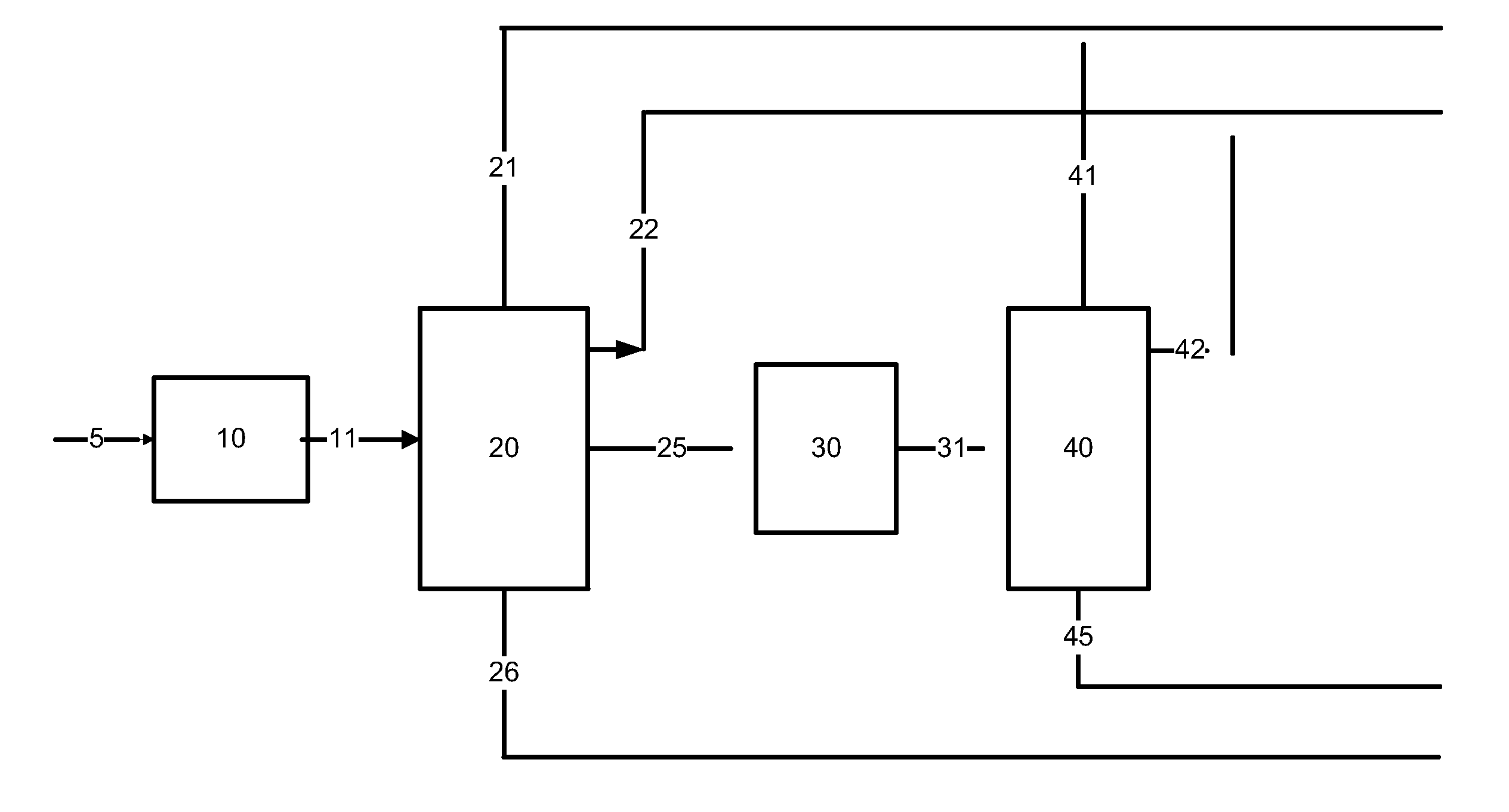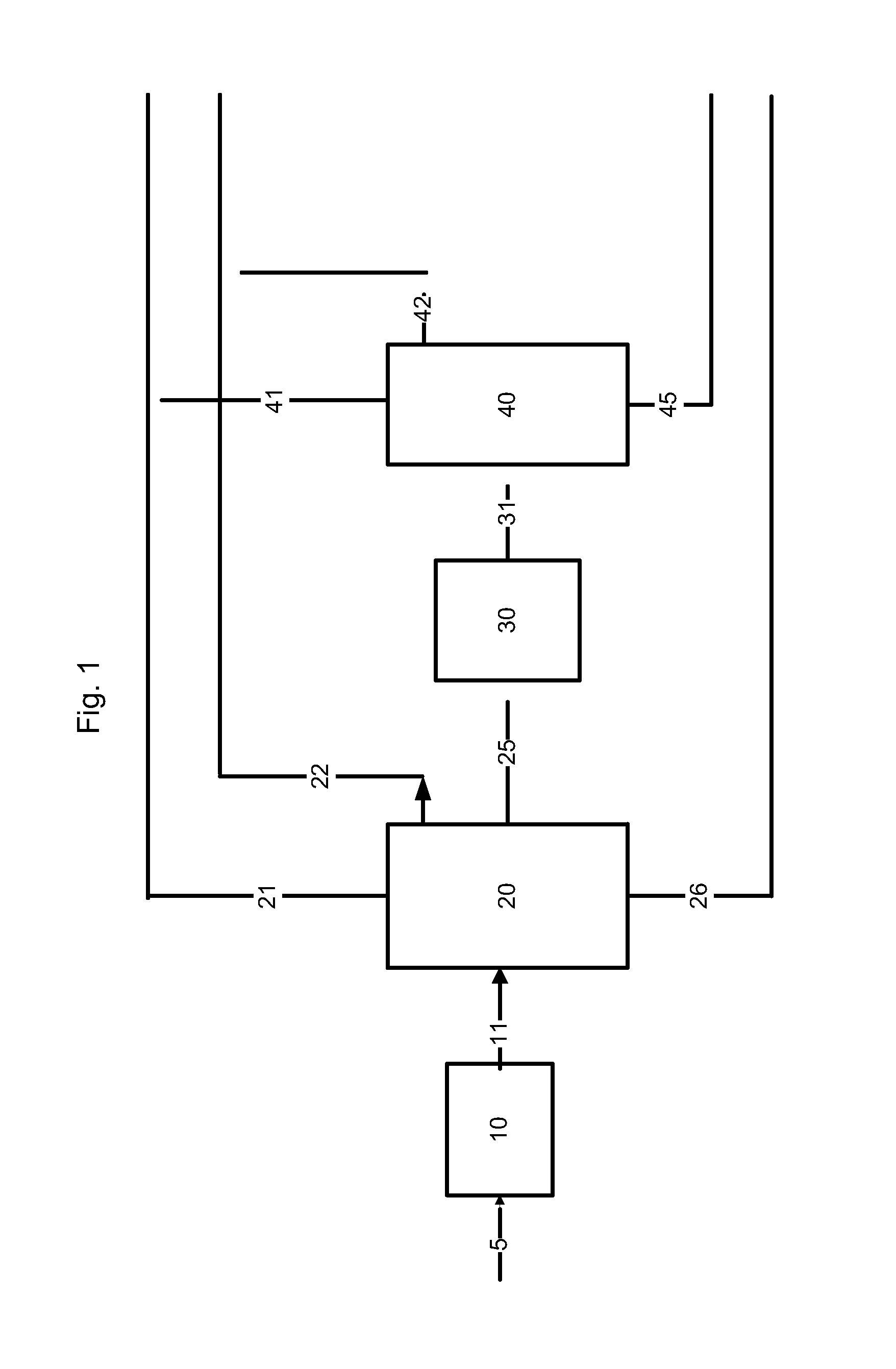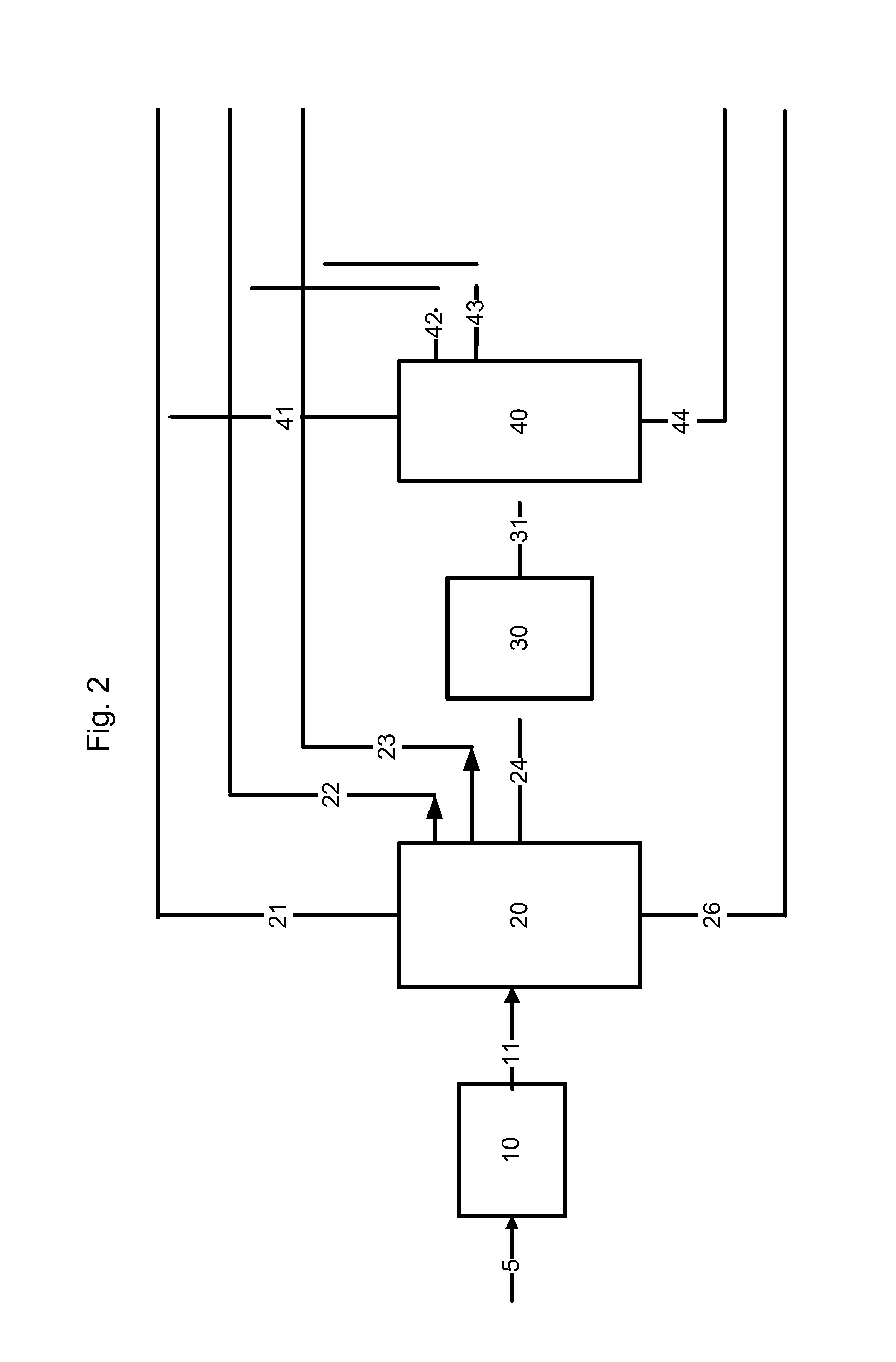Multi-stage reforming process to produce high octane gasoline
- Summary
- Abstract
- Description
- Claims
- Application Information
AI Technical Summary
Benefits of technology
Problems solved by technology
Method used
Image
Examples
example 1
[0086]A naphtha feed, with an API of 54.8, RON of 53.3 and an ASTM D-2887 simulated distillation shown in Table 1 was reformed in a penultimate stage using a commercial reforming catalyst comprising platinum with a rhenium promoter on an alumina support. The catalyst contained about 0.3 wt. % platinum, and about 0.6 wt. % rhenium on an extruded alumina support. Reaction conditions included a temperature of 840° F., a pressure of 200 psig, a 5:1 molar ratio of hydrogen to hydrocarbon and a feed rate of 1.43 hr−1 LHSV. The C5+ liquid yield was 92.7 wt %. The hydrogen production was 975 standard cubic feet per barrel feed.
[0087]This C5+ liquid product (penultimate effluent) collected from the penultimate stage had an API of 46.6, an RON of 89 and an ASTM D-2887 simulated distillation as given in Table 2.
TABLE 1Simulated Distillation of naphtha feedVol %Temperature, ° F.IBP1821019930227502587029190336EP386
TABLE 2Simulated Distillation of the C5+ liquid productfrom the penultimate stage ...
example 2
[0088]The C5+ liquid product from Example 1 was distilled into an intermediate reformate and a heavy reformate. The intermediate reformate was found to represent 80 vol % of the C5+ liquid product from Example 1. The intermediate reformate, had an API of 55.7, an RON of 85 and an ASTM D-2887 simulated distillation as shown in Table 3, and was used as feed in a final reforming stage in Examples 3-6. The heavy reformate was found to represent 20 vol. % of the C5+ liquid product from Example 1. The heavy reformate had an API of 28.9 and an RON of 105, and is further described in Table 4.
TABLE 3Simulated Distillation of intermediate reformateVol %Temperature, ° F.IBP1681019030235502407028490296EP336
example 3
[0089]The intermediate reformate produced in Example 2 was used as feed to the final reforming stage which used a ZSM-5 zeolite based catalyst composited with 35% alumina binder material. The ZSM-5 had a SiO2 / Al2O3 molar ratio of ˜2000 and was ion exchanged to the ammonium form before incorporating in a 65% zeolite / 35% alumina extrudate. The extrudate was impregnated with 0.8% Pt, 0.3% Na, and 0.3% Mg by an incipient wetness procedure to make the final catalyst. The reaction conditions and experimental results are listed in Tables 4 and 5.
PUM
 Login to View More
Login to View More Abstract
Description
Claims
Application Information
 Login to View More
Login to View More - R&D
- Intellectual Property
- Life Sciences
- Materials
- Tech Scout
- Unparalleled Data Quality
- Higher Quality Content
- 60% Fewer Hallucinations
Browse by: Latest US Patents, China's latest patents, Technical Efficacy Thesaurus, Application Domain, Technology Topic, Popular Technical Reports.
© 2025 PatSnap. All rights reserved.Legal|Privacy policy|Modern Slavery Act Transparency Statement|Sitemap|About US| Contact US: help@patsnap.com



